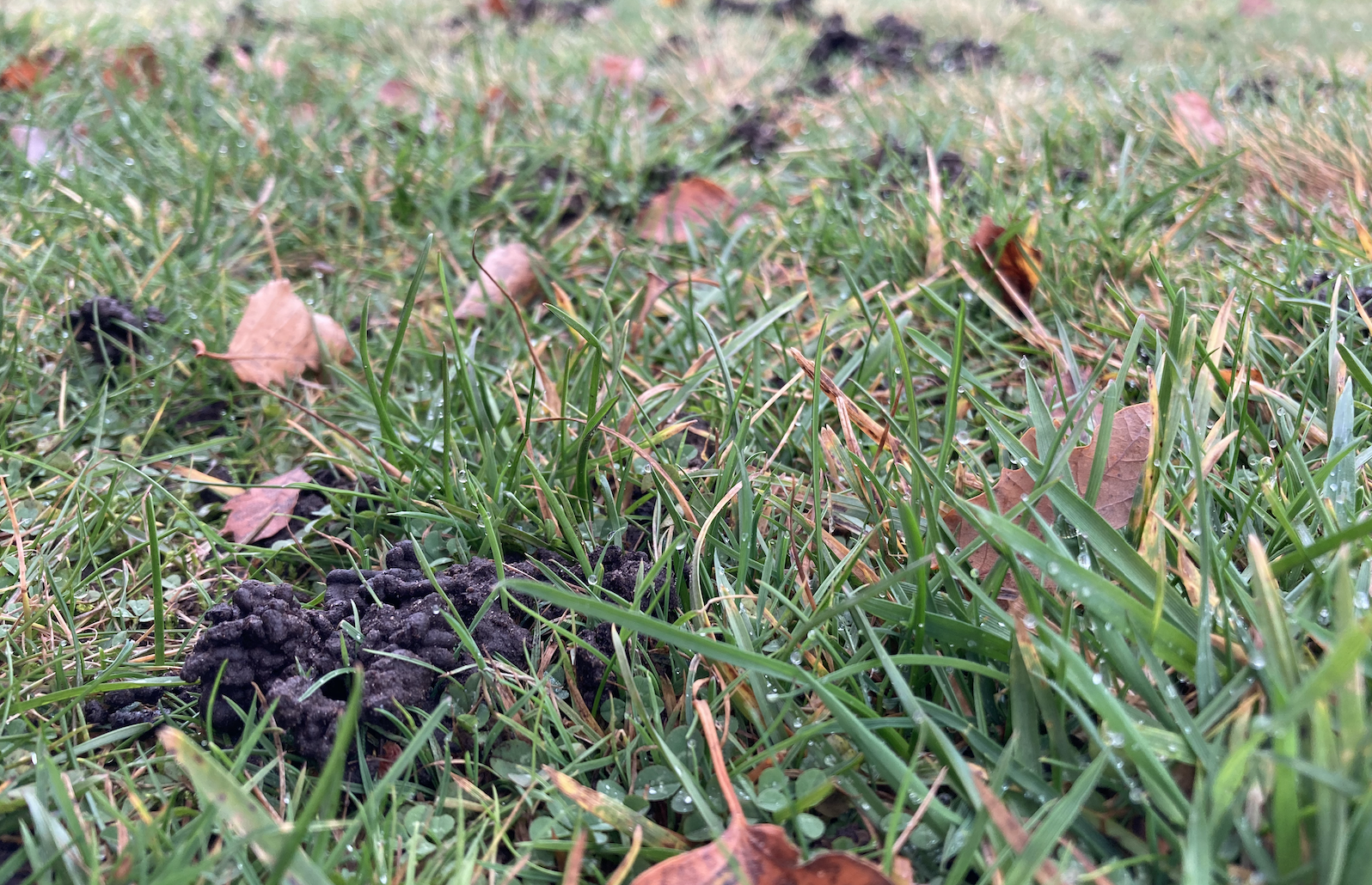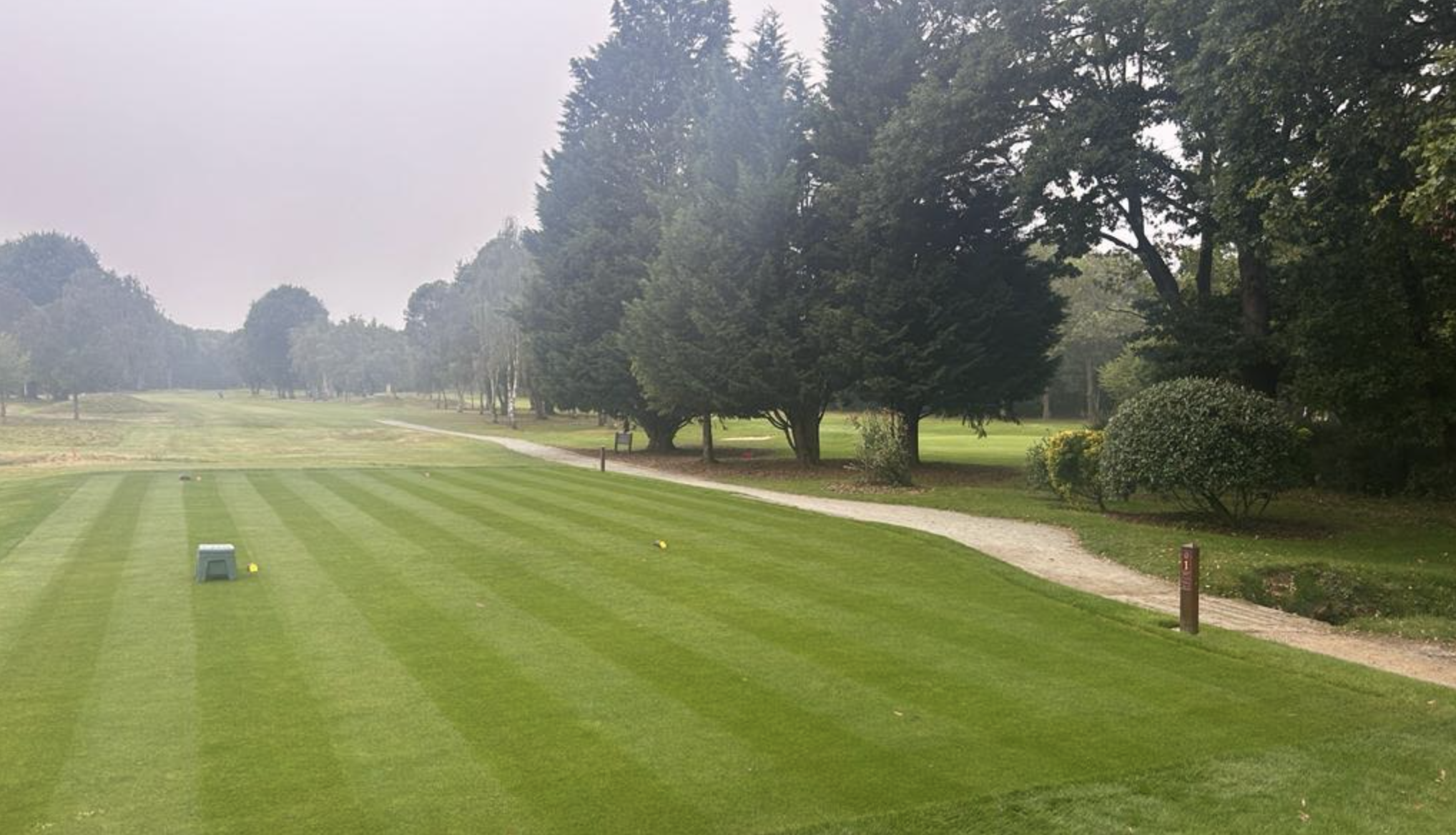'Worm Casts Have Become A Big Pain In The Greenkeeper’s Backside'
Langley Park Golf Club's Head Greenkeeper Wayne Aris discusses what his team has been doing to improve drainage and course conditions through a wet winter


This winter in the UK has been a wet one. A head greenkeeper recently told us that he had never known anything like it, with his course closed for six weeks.
Months of low temperatures and heavy rainfall bring huge challenges to greenkeepers and course managers, especially as more and more golfers treat the sport as a year-round pursuit and not just a sunny, summer jaunt.
With that brings its challenges as higher footfall, and in some cases higher expectations, vs wetter winters mean more course closures, more resource needed for course drainage projects and more unhappy golfers unable to get their fix.
Another challenge came in 2017, when the fungacide carbendazim, used to deter worms, was banned in the UK due to worries over its safety. It was a cheap and easy way to treat courses as Wayne Aris, Head Greenkeeper at Langley Park Golf Club in Kent told us.
Aris has been in the industry for 16 years, moving up from an entry-level position all the way to Head Greenkeeper at his club - which is putting big resources into the course's drainage.
"The worst one that has changed is the worm products," Aris told Golf Monthly on the the biggest change he's seen during his career in greenkeeping.
"So when they banned carbendazim. It used to cost about £70 for an application and for probably about £300-£400 you could treat the whole course almost wall to wall and you’d spray it once and you wouldn’t see a worm cast for three months.
Get the Golf Monthly Newsletter
Subscribe to the Golf Monthly newsletter to stay up to date with all the latest tour news, equipment news, reviews, head-to-heads and buyer’s guides from our team of experienced experts.
"Since they banned that, worm casts have become a big pain in the greenkeeper’s backside and we’re always trying to find ways to not necessarily solve the problem but improve the playing surfaces, whether it be sand applications or soil conditioners, which improve the acidity of the soil to deter worms away but nothing is quite as effective as the old chemical you used to spray.

"I think BIGGA [the British and International Golf Greenkeepers' Association] did a really good job when carbendazim was banned in educating the members of golf clubs of the ban and the chemical so golf courses have to look at alternative methods which probably aren’t going to be as successful.
"I think generally my members in particular understand the challenges we face and they’re aware, whether it’s through talking to them through my course reports on different challenges we’re facing in the industry or whether it’s organisations like BIGGA. One way or another the information has been put out, which is good as it helps their knowledge and understanding."
Aris admitted this winter has been a "very challenging one" but Langley Park is coping well despite being a clay-based course, and therefore traditionally a wet one, thanks to hard work and a healthy budget.

"This winter has been a very wet one, a very challenging one," he said. "So we’ve had in the last three months 386m from October to December and then we’ve already had 40m in January alone so that’s a lot of rain.
"My course is a clay, parkland course so predominantly we’ve been known, for probably the last 15-20 years plus, to be a not very good winter course, poor drainage and a bit of a slog through the winter. So since I’ve been in charge four years ago we’ve worked really hard on alternative ways to improve that and not just let the weather beat us up.
"Think outside of the box, ways we can improve our soil structure and the ground conditions to try and combat that as best as we can.
"We’re fortunate enough as we have the budget for it, a lot of clubs probably can’t, we put about 900 tonnes of sand down on our fairways every year, which helps firm them up.
"We start end of October with about 300 tonnes, then middle of December another 300 tonnes and then we look for our last application end of January-February time depending on the weather. It’s about £35-£50 a tonne, so it’s not cheap.

"We have transformed the course in the winter to be a very poor draining course where it’s almost just accepted that we’re closed for 2-3 weeks at a time, which in my opinion isn’t really good enough for a private members course.
"In the last 12 months, being a particularly wet winter, we were only shut for 15 days, which is a record for us. We’re gradually improving on it and that certainly helps. Sometimes you’re totally governed by the weather, other times you can do just as much as you can to squint things in your favour just that little bit more."
So what can course managers on similar clay-based courses do? Aris recommends traffic control and aeration, with a key focus of getting water into the drains, something that is more difficult than it sounds.
"Traffic control always help. We try and limit trolley bans as much as possible, but we do implement a carry if you can policy," he explained.
"I put that on my course reports and daily updates. We obviously don’t expect the really old ladies and gents to carry and struggle their way through it, but if you are able to just sort of carry a pencil bag around and a few clubs in the bag, that makes things a little bit more enjoyable for the golfer as well.

"Also what we do is a lot of aeration from October all the way through the winter really, whether it be shockwaving or verti-draining or splitting, anything like that, anything we can do to try and get the water through the profile.
"My course is 116 years old and there’s drains everywhere, but you’ve just got to get the water to the drain. That’s what we’ve found works.
"We work very hard and spend a lot of time and effort and money on our greens, whether it be fungicides or turf hardener packages or aeration or sand dressings through the playing season, we try to get over 200 tonnes of sand on our greens through the season.
"Little and often is our method that we have adapted, which tends to work well. We have one day in every single month in the diary, which is a course maintenance day where we’re allowed to do any sort of work to the course during those days, also we have a week in March and a week in September - our main, big maintenance weeks."

Elliott Heath is our News Editor and has been with Golf Monthly since early 2016 after graduating with a degree in Sports Journalism. He manages the Golf Monthly news team as well as our large Facebook, Twitter and Instagram pages. He covered the 2022 Masters from Augusta National as well as five Open Championships on-site including the 150th at St Andrews. His first Open was in 2017 at Royal Birkdale, when he walked inside the ropes with Jordan Spieth during the Texan's memorable Claret Jug triumph. He has played 35 of our Top 100 golf courses, with his favourites being both Sunningdales, Woodhall Spa, Western Gailes, Old Head and Turnberry. He has been obsessed with the sport since the age of 8 and currently plays off of a six handicap. His golfing highlights are making albatross on the 9th hole on the Hotchkin Course at Woodhall Spa, shooting an under-par round, playing in the Aramco Team Series on the Ladies European Tour and making his one and only hole-in-one at the age of 15 - a long time ago now!
Elliott is currently playing:
Driver: Titleist TSR4
3 wood: Titleist TSi2
Hybrids: Titleist 816 H1
Irons: Mizuno MP5 5-PW
Wedges: Cleveland RTX ZipCore 50, 54, 58
Putter: Odyssey White Hot OG #5
Ball: Srixon Z Star XV
-
 Rory McIlroy Fires Back-To-Back 370-Yard Monster Drives In Birdie-Eagle-Birdie Start To Lead The Masters
Rory McIlroy Fires Back-To-Back 370-Yard Monster Drives In Birdie-Eagle-Birdie Start To Lead The MastersIt's safe to say that the four-time Major winner was full of adrenaline at the start of his third round, with McIlroy pounding two drives that measured a total of 740-yards
By Matt Cradock Published
-
 Who Is On Bryson DeChambeau’s Team? Coach, Caddie, Manager And More
Who Is On Bryson DeChambeau’s Team? Coach, Caddie, Manager And MoreBryson DeChambeau is one of the most high-profile and successful players of his era, but who are the team members helping to guide his career?
By Mike Hall Published